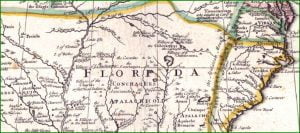Treaty With The Delaware, August 3, 1829
Articles of agreement made between John M’Elvain, thereto specially authorized by the President of the United States, and the band of Delaware Indians, upon the Sandusky River, in the State of Ohio, for the cession of a certain reservation of land in the said State. Article 1. The said band of Delaware Indians cede to the United States the tract of three miles square, adjoining the Wyandot reservation upon the Sandusky river, reserved for their use by the treaty of the Rapids of the Maumee, concluded between the United States and the Wyandots, Seneca, Delaware, Shawnees, Potawatamies, Ottawas, and Chippiwa … Read more


